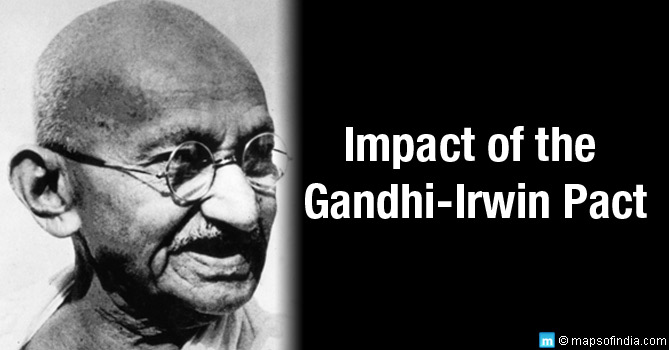Gandhi-Irwin Pact was signed on March 5, 1931, between Mahatma Gandhi and Lord Irwin, who was at the time the Viceroy of India. It was a political agreement that was signed before the second Round Table Conference.
Background of the Gandhi-Irwin Pact?
Between March and April 1930, Mahatma Gandhi had initiated the Salt Satyagrah or the salt march to produce salt from the sea water in the coastal village of Dandi. The march was the first act in the civil disobedience campaign. The government has imposed a series of laws which prohibited Indians from independently producing or selling salt. They were also forced to buy expensive and heavily taxed salt. The salt satyagrah was in protest against these policies of the British and gave an impetus to the civil disobedience movement. The British cracked down on the satyagrahis and arrested Mahatma Gandhi. However, the movement progressed and gained strength attracting tens of thousands of people. The British used many ruthless measures to crush the movement such as lathi charge, firing on the protestors, arrests etc. By the end of 1930, prominent Congressmen like Jawaharlal Nehru and thousands of ordinary Indians were lodged in Jail. The movement had not only created troubles for the British in India but had also garnered media attention around the world. Lord Irwin was looking for a way to get out of the impasse and invited Mahatma Gandhi for talks and in 1931 he was released from prison. Thus, the two men began negotiations and in 1931 the Gandhi-Irwin Pact was signed. A total of eight meetings were held between the two leaders and these lasted 24 hours.
The pact, which was signed by Lord Irwin on behalf of the government and Mahatma Gandhi, on behalf of the Indian National Congress agreed on the following points
The points of the agreement agreed upon were:
All the political prisoners who were not convicted for creating violence were to be released immediately.
Villages that were located along the coast were given the right to make salt for their consumption.
Confiscated properties of the satyagrahis was to be restored.
Peaceful picketing of foreign clothes and liquor shops was to be permitted.
The ban over the Congress was to be lifted.
All ordinances were to be withdrawn and prosecutions ended.
Meanwhile, the Congress agreed to end the Civil Disobedience Movement and to participate in the Second Round Table Conference.
Impact of the Gandhi-Irwin Pact
The Gandhi-Irwin Pact had far reaching implications for the Congress as well as India. British acceptance of the Congress as the sole representative of the people of India brought the premier Indian party on an equal footing with the government. Even though the Congress had suspended the Civil Disobedience movement, the status and prestige of the Congress were significantly increased after the signing of the pact.
Know more facts on our Bapu:
Mahadev Desai: More than the Mahatma’s shadow
Some lesser known facts about Mahatma Gandhi
Are Mahatma Gandhi’s Ideals Relevant Even Today?
Nathuram Godse and Assassination of Mahatma Gandhi






